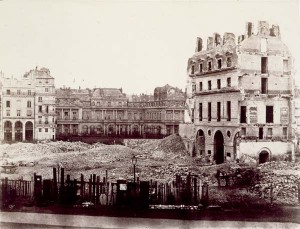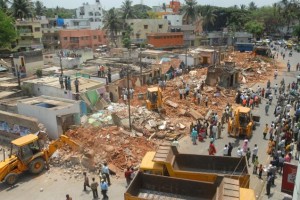The connection that exists between urbanization and capitalism has evolved throughout recent years. Many areas around the world most predominantly China, India, and certain countries in Latin America have experienced the effects of rapid urbanization as a result of capitalistic proposals. Interestingly enough these are some of the same countries that struggle with issues of informal housing.
As David Harvey states in The Right to the City, “ We live after all in a world in which the rights of public property and the profit rate trump all other notions of rights.” For capitalism to exist there must be a product that is produced in excess in order for the revenue itself to be worthwhile. As a result, “urbanization depends on the mobilization of a surplus product” [1]. In the everyday context this can be said to be the housing market with homes/apartments/ community developments being the product but also the need to house expanding populations. The demand for rapid housing results in private urbanization that generates revenue. However, In order to expand land must be acquired but in many of these expanding cities external problems such as the rapid mobilization of rural inhabitants to the city as a result of a plethora of issues ( all unique to country itself) have led to the settling of many potentially lucrative zones. Rural inhabitants moving towards the city center make up the largest portion of those who migrate to cities around the world predominantly in China. In turn this creates a situation where the boundary between urban and rural locations is slowly drowning away into as Harvey states, “spaces of uneven geographical development under hegemonic command of the capital and state.” [1]

The settlement of lucrative zones by squatters leads to the destruction of many of these settlements and the displacing of many individuals. This is active method of removal that is not new and is seen in many urban planning projects such as those of Haussmann tearing down through old Parisian slums in the mid 1800’s stating his methods are those of civic improvement and renovation. The affected are the poor who for the most part do not have land rights of where they live in and are thus subjected to the manipulation of those who can actually buy ,which are the wealthier elites of the population.

Present day depiction of slum destruction
Methods of acquiring land such as awarding property rights to squatter populations is plausible but in many instances difficult because the people who require these lands for revenue do not want to give up the chance to earn money. As result, instances of “surplus absorption” through urban transformation begin to utilize methods such as “creative destruction” which lead to the marginalization of the poor. It is not only through destruction that these areas are marginalized but it is through their recognition of their presence in the everyday context. For example many of these settlements do not even appear on the maps of the city that they physically pertain to. For this reason more proposals need to me made in cities around the world to regard these individuals as part of the formal city.
Our current world exists in two halves that collide, “those that exist in the planet of building and those in the planet of the slum.” [1] The possibility to unify exists but first we must look back and reflect upon what new methods of urbanization can be implemented to suit the two sides. The proposal must begin at the small scale and move its way up but it must indefinitely turn to the political sector because many of these cases deal with issues of human rights. As Lefebvre states, “revolution has to be urban, or nothing at all.” [1]
1. David Harvey, The Right To The City, ( New York : Guilford Press, c2003.) p 23-40
//
//
//
//

